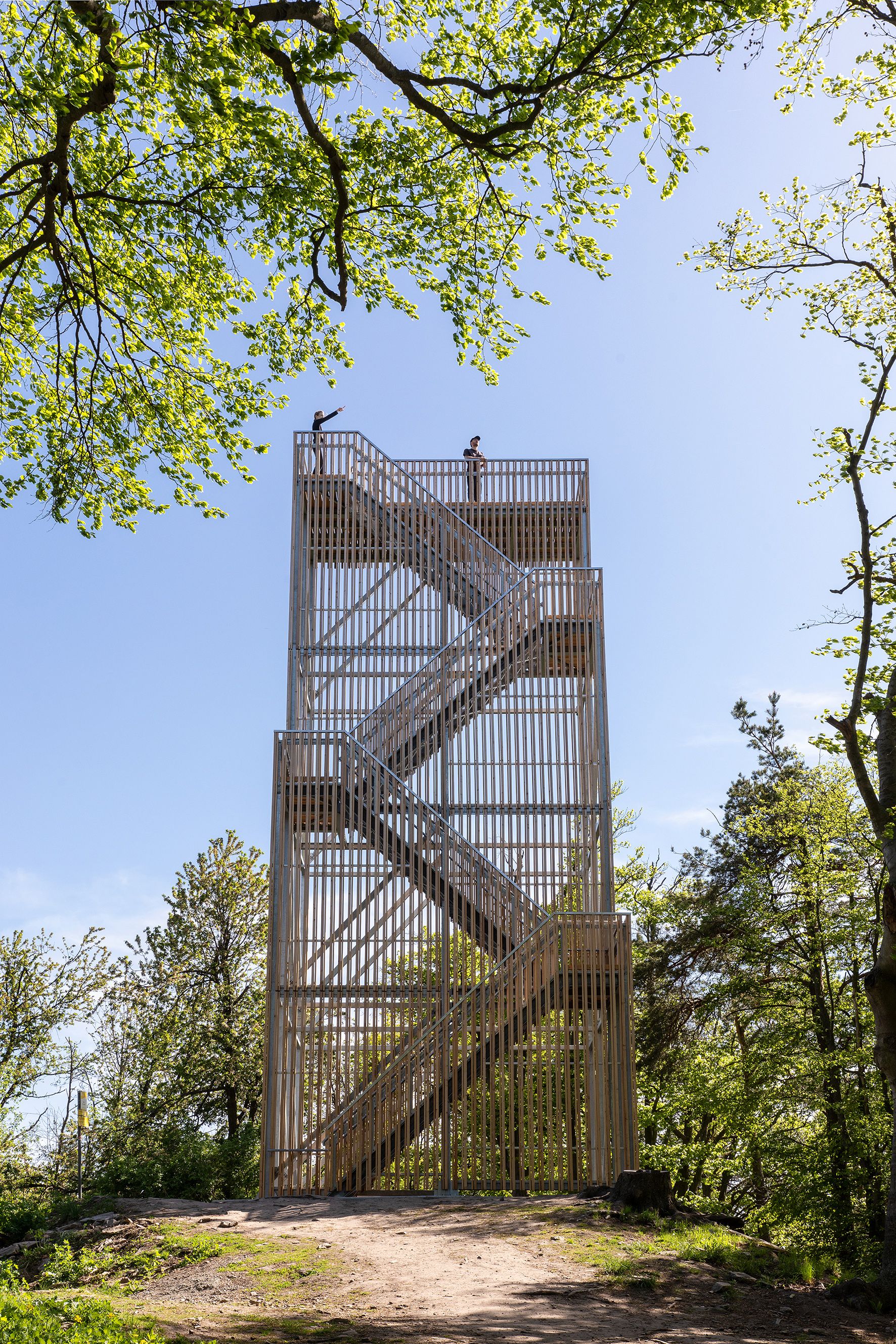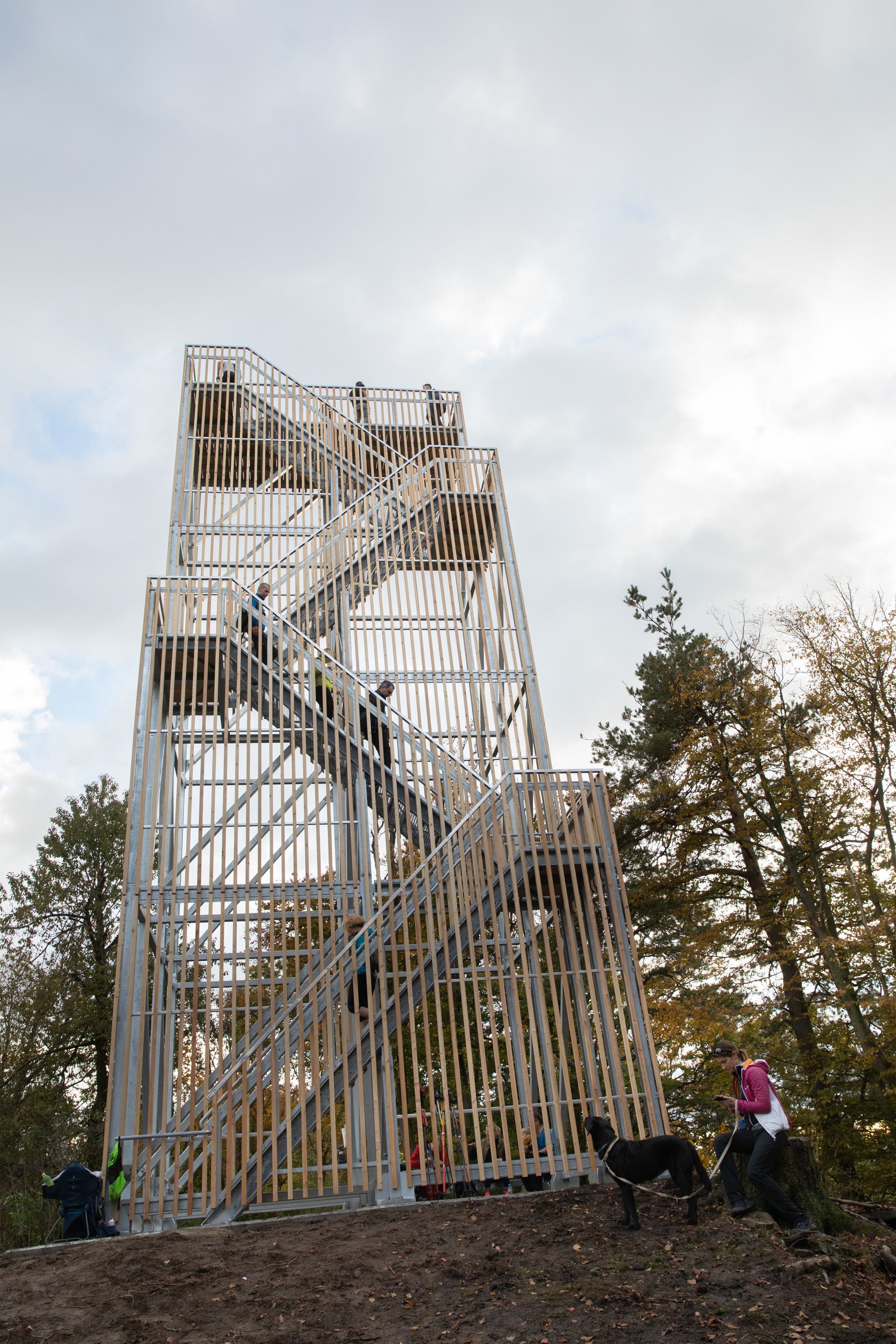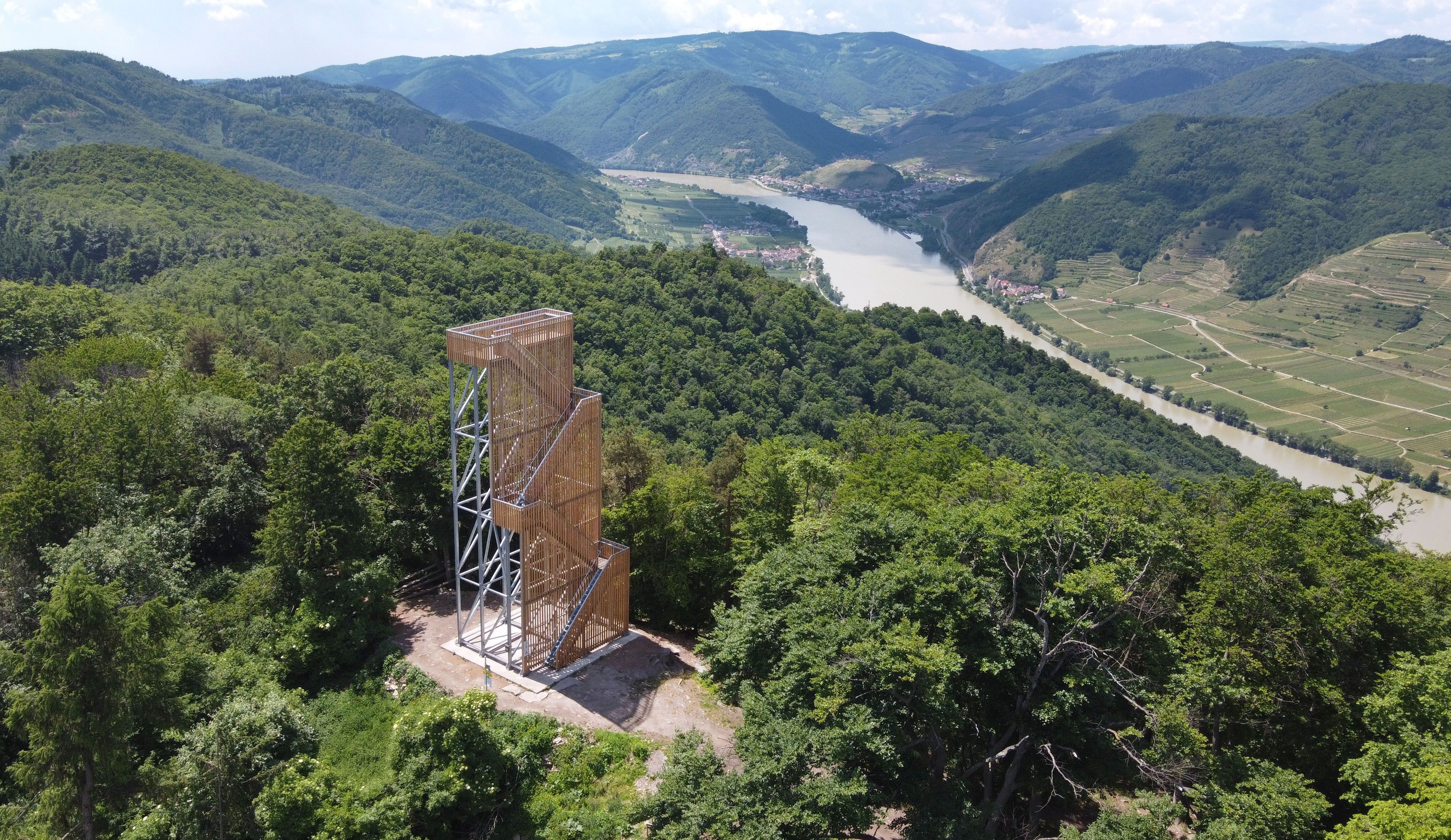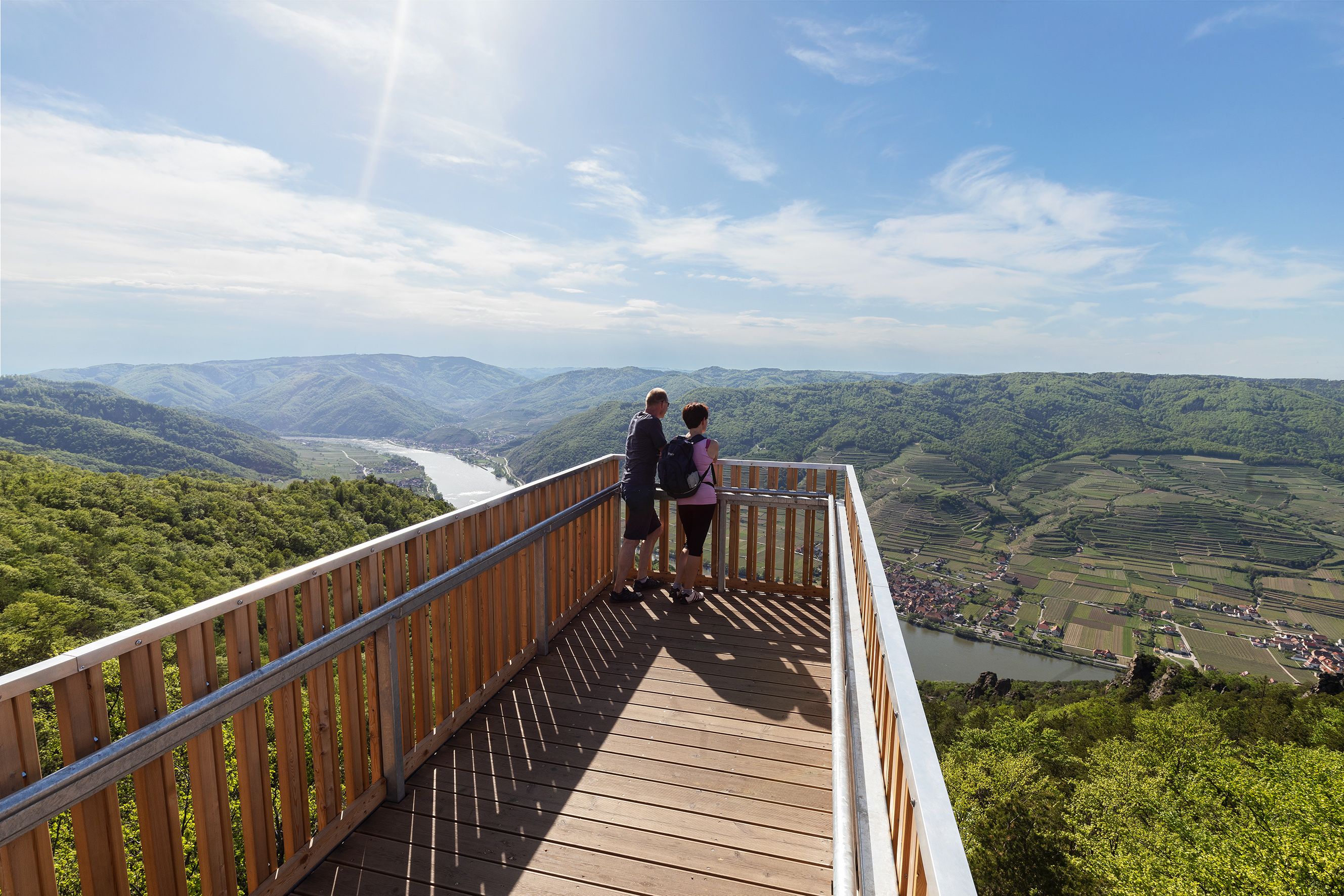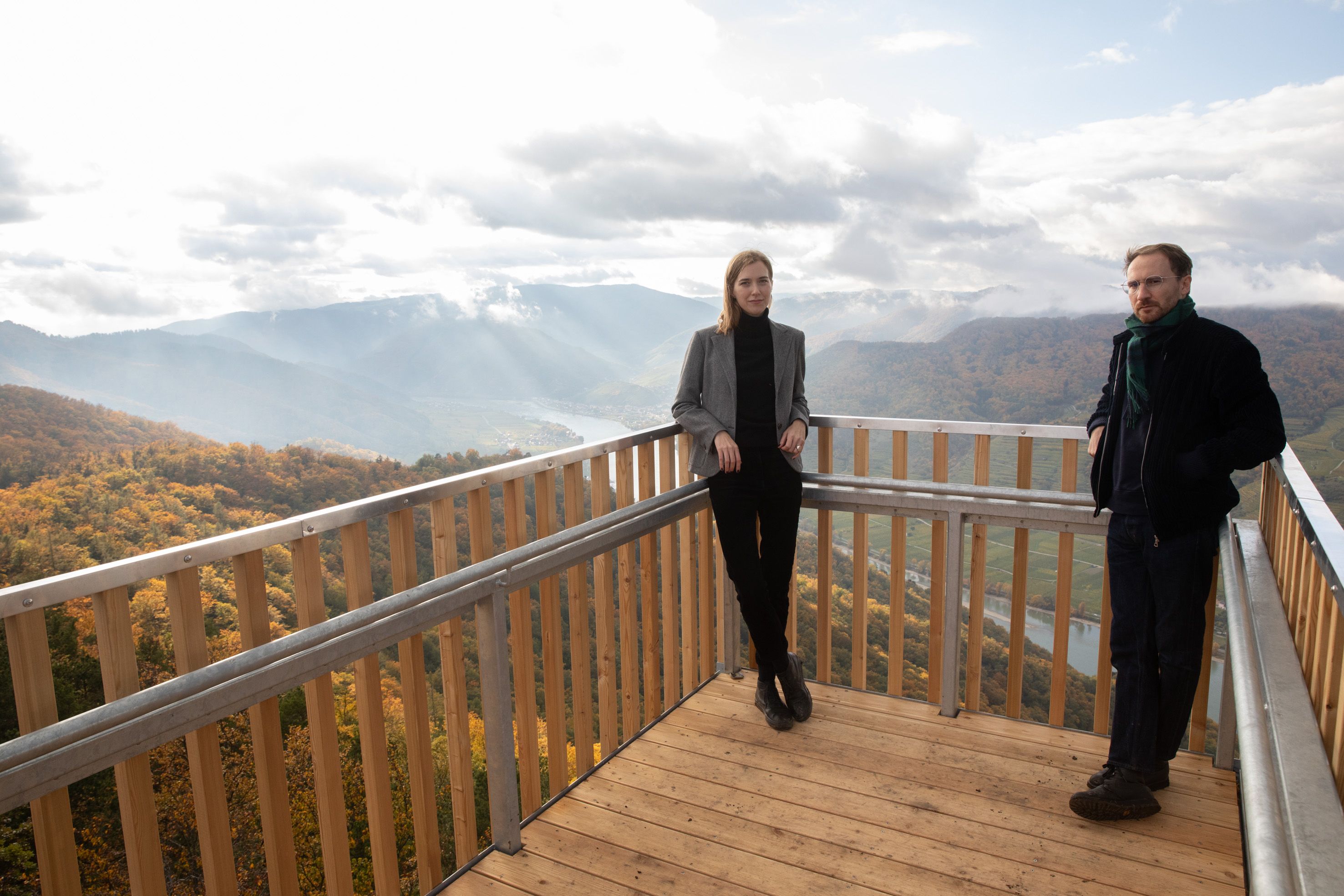Eldine Heep,
Klemens Schillinger
:
Die Vierte Wand
Back
Information
The Wachau region is celebrating its 20th anniversary of being awarded the status of a world cultural heritage site. The best view of this beautiful region can now be enjoyed from the new observation tower at the top of Seekopf Mountain, which is 671 meters in height. The construction on this mountain in the Dunkelstein Forest, south of the Donauschlinge (where the river almost creates a loop) between Weissenkirchen and Dürnstein, is made of wood and steel and was conceived by the designer duo Eldine Heep and Klemens Schillinger and has replaced the derelict old tower. Thanks to the dramatic staging of the stair climb, it now offers an attractive highpoint of the Welterbesteig hiking trail, which runs for 180 kilometers along the banks of the Danube.
The old observation tower on Seekopf had stood for more than 25 years. It had been built by a society for preserving local customs in the area called Jankerlklub Rossatz (a janker is a felt jacket worn in the Alps), who constructed it with their own hands in 1993. For its 25th anniversary in 2018, the decision was made to replace the derelict tower located on a popular hiking trail with a new tower and thus to preserve the panoramic view of the Danube from Seekopf, which is otherwise covered in dense forest. The construction was meant not only to fulfill this function, but also to offer visitors the additional opportunity to experience this fragile landscape in a special way. In celebration of the 20th anniversary of the world cultural heritage site, the new tower makes it possible to enjoy this wonderful view of the Wachau region again, while also inspiring reflections on architecture and how it interacts with the nature around it.
The title of the architectural object The Fourth Wall is derived from the theater and refers to the imaginary boundary between the stage and the auditorium, the breaking of which means direct interaction. Heep and Schillinger use this dramaturgic idea for the tower in the form of barriers that block visitors’ view, creating an element of tension. The stairs lead up to the platform along a larch wood clad and staggered wall. The wooden structure not only downplays the steel construction; it also blocks our view while ascending. This increases our motivation to climb the 15 meters up the stairs to be able to enjoy the breathtaking panorama in its entirety from the platform.
Lilli Hollein, Director of the Museum of Applied Arts in Vienna, says about the project:
“A stage set in the landscape.
The ascent is obscured, the backbone transparent.
And yet, nothing is what it seems.
Eldine Heep and Klemens Schillinger are fans of clear structures and of exposing and revealing things. Heep, who is an architect, and Schillinger, a designer, have collaborated on many projects that reflect their ability to tease out the true underlying structures. They master this with meticulous control, humor, sensitivity, a love for detail, and a feel for grand gestures. This can also be seen in their approach to the project of designing an observation tower on Seekopf Mountain.
While the tower is as slender, reduced, and transparent as possible, it also has a decidedly poignant and palpable appearance that seems natural, yet also somehow vexing.
The steel scaffolding stands tall in the landscape, looking like a bold but delicate foreign object, with a base measuring six-by-six meters, of which one side is clad in larch wood.
But what at first glance resembles a stage wall that has been dropped into the landscape turns out to consist of stairs in serpentines, or humbly hidden cascades, which inspire introspection while ascending, because the destination—in other words, the view—is not revealed until the end. According to Heep & Schillinger, ‘You ascend along the wall like in a procession to the top. Your curiosity about what lies behind it increases with every step.’ Inspirations for this construction range from the Tower of Babel, to film sets, all the way to the terraced vineyards of the Wachau Region. Far from stealing the show from the landscape, the observation tower helps us to focus our gaze on what is important.”
Images (5)
